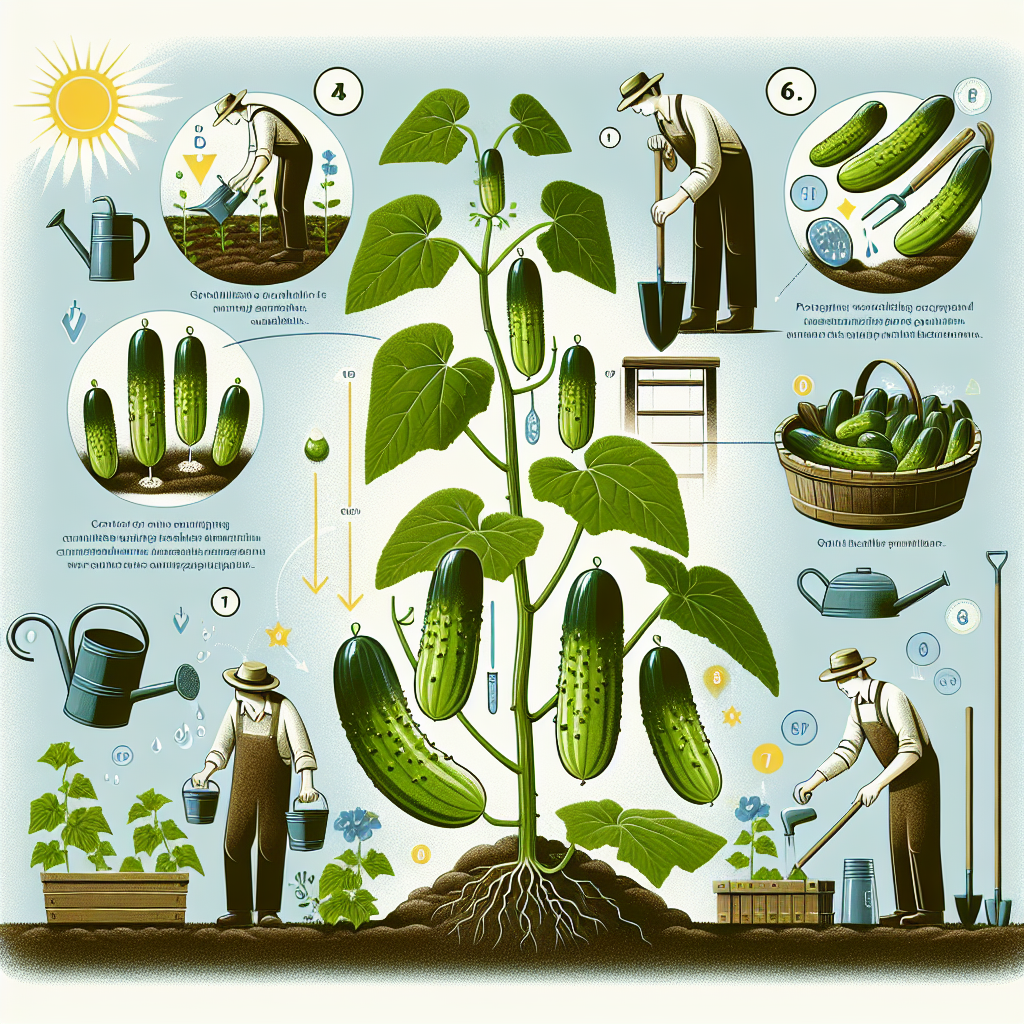
How to grow gherkin cucumbers
How to Grow Gherkin Cucumbers: A Complete Guide
Gherkin cucumbers, also known as pickling cucumbers, are small, crunchy, and often used in making delicious pickles. These miniature vegetables are not only favored for their flavor but also for their ability to thrive in a variety of conditions. If you're looking to dive into the world of gardening and want to know how to grow gherkin cucumbers, this comprehensive guide will cover everything you need, from seed selection to harvesting your tasty crop.
Understanding Gherkin Cucumbers
Gherkin cucumbers belong to the Cucumis sativus species and are popular for their unique taste and texture. Unlike their larger cucumber cousins, gherkins are typically harvested when they are about 1 to 3 inches long. These small cucumbers are primarily used for pickling but can also be consumed fresh. Understanding their characteristics and growth preferences is crucial for a successful harvest.
Choosing the Right Variety
Before planting, it's essential to select the right gherkin variety for your needs. Here are a few popular choices:
- Boston Pickling - A traditional variety known for its excellent pickling qualities.
- Kirby - Crisp and flavorful, Kirby gherkins are favored for both pickling and fresh consumption.
- Gherkin - A specific variety bred primarily for pickling, small and thorny.
- Pearl - Known for producing small, tender gherkins with a firm skin.
Selecting a variety suited to your local climate and your intended use will help ensure your gherkin-growing success.
Preparing Your Garden
Once you’ve chosen the right gherkin variety, it’s time to prepare your garden for planting. Follow these steps to create an optimal environment:
- Choose the Right Location: Select a sunny spot that receives at least 6 to 8 hours of sunlight daily.
- Check Soil Quality: Gherkins prefer well-drained, sandy loam soil. Test your soil pH; it should be slightly acidic to neutral (6.0–7.0).
- Soil Preparation: Improve your soil by mixing in compost or well-rotted manure to enhance nutrient levels and drainage.
Planting Gherkin Cucumbers
The planting process is crucial for healthy gherkin growth. Here’s how you can plant them successfully:
- Timing: Plant gherkin seeds outdoors once the danger of frost has passed and the soil temperature reaches about 70°F (21°C).
- Seed Depth: Sow seeds about ½ inch deep, spacing them 12 to 18 inches apart.
- Row Spacing: If planting in rows, space your rows 3 to 4 feet apart to allow ample room for growth and airflow.
- Direct Seeding or Transplanting: Gherkins can be sown directly or started indoors and transplanted. If starting seeds indoors, do so about 3–4 weeks before the last frost date.
Watering Your Gherkin Plants
Watering is a critical aspect of how to grow gherkin cucumbers. Here are some watering tips to follow:
- Consistency: Gherkins require consistent moisture. Water regularly, especially during dry spells, to prevent stress and ensure healthy growth.
- Deep Watering: Water deeply but infrequently to encourage strong root development.
- Mulching: Apply mulch around your plants to retain soil moisture and mitigate weed growth.
Providing Support for Gherkin Cucumbers
Gherkins can benefit from support as they grow, preventing damage and improving air circulation around the plants. Here are some options:
- Vertical Trellising: Using trellises or cages allows gherkins to climb, saving space while improving fruit quality.
- Stakes or Fencing: Support can be provided using stakes or a fence for the gherkins to cling to.
Pest and Disease Management
Keeping your gherkin plants healthy is essential for a fruitful harvest. Here’s how you can manage common pests and diseases:
- Pests: Watch for aphids, cucumber beetles, and spider mites. Use insecticidal soap or introduce beneficial insects like ladybugs to combat these pests.
- Diseases: Fungal diseases like powdery mildew can affect gherkins. Ensure proper spacing for air circulation and avoid overhead watering to minimize these risks.
Fertilizing Your Gherkin Plants
Fertilization plays a significant role in maximizing your gherkin yield. Consider these points:
- Initial Fertilizer: Use a balanced fertilizer at planting to give the seedlings a good start.
- Side-Dressing: Apply a nitrogen-rich fertilizer as the plants start to grow, and follow up with a low-nitrogen, high-potassium fertilizer as they begin to flower.
Harvesting Your Gherkin Cucumbers
Timing is everything when it comes to harvesting gherkins. Here’s what you need to know:
- Optimal Size: Gherkin cucumbers are typically harvested when they reach 1 to 3 inches in length.
- Frequency: Regularly check your plants every few days, as gherkins can grow rapidly.
- Harvesting Technique: Use scissors or pruners to cut the gherkins off the vine to avoid damaging the plant.
Storing Gherkin Cucumbers
After harvesting, proper storage is key to maintaining freshness and quality:
- Refrigeration: Store gherkins in the refrigerator, where they can last up to a week.
- Pickling: For long-term preservation, consider pickling your gherkins to enjoy them throughout the year.
Conclusion
Growing gherkin cucumbers can be a rewarding experience filled with flavor and fun. From selecting the right variety to managing pests and diseases, a successful gherkin garden requires diligence and care. By following this guide, you'll not only learn how to grow gherkin cucumbers effectively but also enjoy the fruits of your labor in delicious pickles and fresh salads. Happy gardening!
By Guest, Published on August 15th, 2024